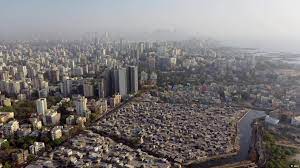Urbanization, the process of population concentration in cities, is a global phenomenon that
has been on the rise for decades. As more and more people flock to urban areas in search of
better opportunities, the sustainability of megacities has come under scrutiny.
Megacities, typically defined as urban areas with populations exceeding 10 million inhabitants, face
unique challenges in terms of maintaining environmental sustainability and due to their
sheer size and complexity. One of the key questions that arise is whether megacities can
truly become eco-friendly while accommodating such large populations and thriving
economically.
The concept of sustainability in the context of urbanization revolves around meeting the
needs of the present generation without compromising the ability of future generations to
meet their own needs. This includes aspects such as environmental protection, social equity,
and economic development. In the case of megacities, achieving sustainability poses a
significant challenge due to factors such as high population density, increased energy
consumption, and greater strain on resources.
These challenges include also issues such as air and water pollution, inadequate waste management, and loss of green spaces. However, it is not all doom and gloom. To make megacities eco-friendly and more sustainable, urban planners, policymakers, businesses, and communities must work together to implement innovative solutions. In this essay, we will examine eleven key strategies that can help megacities achieve this goal.
1. **Sustainable Transportation Infrastructure**
One of the biggest contributors to carbon emissions in megacities is transportation. To make
megacities more eco-friendly, it is essential to invest in sustainable transportation
infrastructure. This could include expanding public transportation networks, and promoting
electric and hybrid vehicles. By providing viable alternatives to private cars, megacities can
reduce traffic congestion, air pollution, and greenhouse gas emissions.
2. **Developing Cycling and Walking Infrastructure**
Creating dedicated lanes for cyclists and pedestrians can promote active transportation and
reduce reliance on cars. Building bike-sharing programs, pedestrian-friendly pathways, and
green spaces can encourage healthy habits and lower emissions from motor vehicles.
3. **Urban Planning and Design**
Another key aspect of sustainability in megacities is urban planning and design. By carefully
planning the layout of the city, incorporating green spaces, promoting mixed land use
development, and investing in public transportation, megacities can reduce their carbon
footprint and create more liveable environments for their residents.
4. **Renewable Energy Sources**
To reduce their reliance on fossil fuels and decrease carbon emissions, megacities should
prioritize the use of renewable energy sources such as solar, wind, and hydroelectric power.
By investing in renewable energy infrastructure, megacities can not only reduce their
environmental impact but also create new job opportunities and stimulate economic growth.
5. **Green Building Practices**
Another important factor of creating eco-friendly megacities is encouraging green building
practices. This involves constructing buildings that are energy-efficient, use sustainable
materials, and incorporate green spaces such as rooftop gardens. Green buildings not only
reduce energy consumption but also improve the overall quality of life for residents by
providing better indoor air quality and thermal comfort.
6. **Waste Management and Recycling**
Effective waste management is crucial for the sustainability of megacities. Implementing
comprehensive recycling programs, promoting composting and reducing single-use plastics
can help minimize the amount of waste generated and sent to landfills. Additionally,
implementing waste-to-energy technologies can help convert organic waste into renewable
energy, further reducing the carbon footprint of megacities.
7. **Sustainable Water Management**
With water scarcity becoming an increasingly pressing issue, megacities need to adopt
sustainable water management practices. This could include harvesting rainwater,
implementing water conservation measures, and investing in water recycling and treatment
technologies. By reducing water waste and pollution, megacities can ensure a stable and
clean water supply for their residents.
8. **Urban Green Spaces**
In the midst of concrete jungles, urban green spaces play a vital role in improving air quality,
reducing heat island effects, and providing recreational spaces for residents. Megacities
should prioritize the creation and preservation of parks, gardens, and green corridors to
enhance biodiversity, promote wellness, and create a more sustainable urban environment.
9. **Sustainable Food Systems**
Promoting sustainable food systems in megacities can have a significant impact on their
overall sustainability. This could involve supporting local farmers, promoting urban
agriculture, and reducing food waste through initiatives such as community composting and
food redistribution programs. By encouraging residents to eat locally produced, seasonal,
and organic food, megacities can lower their carbon footprint and increase food security.
10. **Community Engagement and Participation**
The success of eco-friendly initiatives in megacities depends on the active involvement of
residents and communities. By fostering a culture of sustainability, promoting
environmental education, and engaging citizens in decision-making processes, megacities
can create a sense of ownership and responsibility towards building a more sustainable
future.
11. **Embracing Smart Technologies**
Ultimately, leveraging smart technologies, such as IoT devices, sensors, and data analytics,
can enable megacities to optimize resource use, improve infrastructure efficiency, and
enhance service delivery. Implementing smart city solutions for energy management,
transportation planning, waste tracking, and water monitoring can lead to more sustainable
urban development.
Conclusion
In conclusion, the sustainable development of megacities is a complex but necessary
endeavour in the face of rapid urbanization and environmental challenges. By implementing
the eleven strategies outlined in this essay – sustainable transportation infrastructure,
urban planning, renewable energy sources, green building practices, waste management
and recycling, sustainable water management, urban green spaces, sustainable food
systems, community engagement, and smart technologies – megacities can take significant
steps towards becoming eco-friendly and more sustainable. It is imperative for
policymakers, urban planners, businesses, and residents to work together to create thriving,
liveable and environmentally conscious megacities for future generations.
By:

















